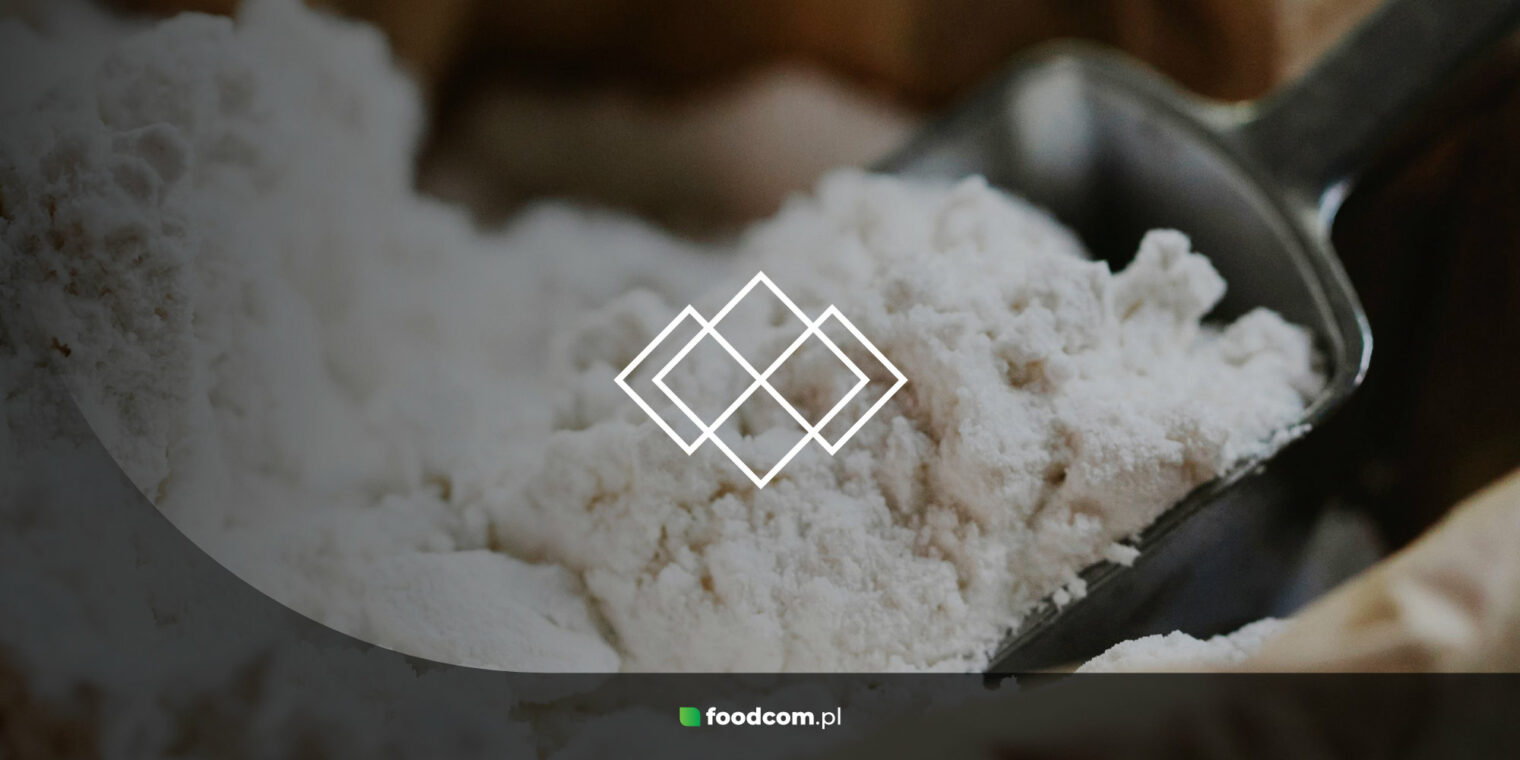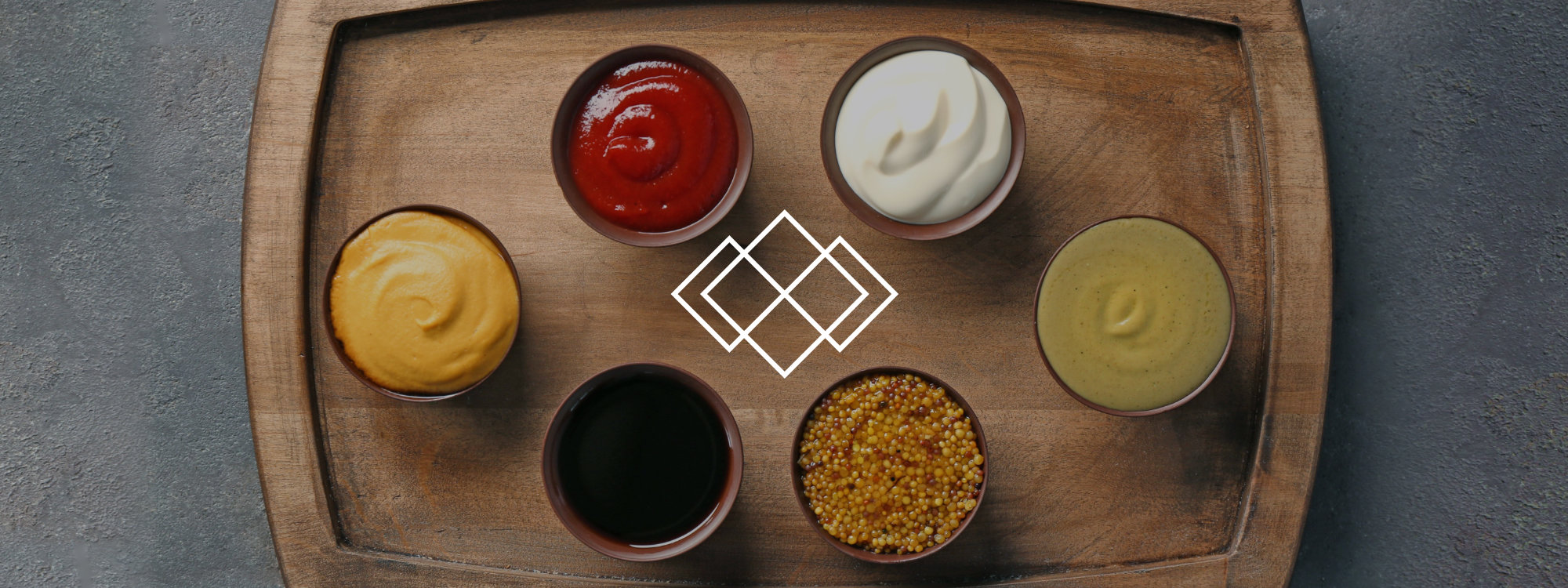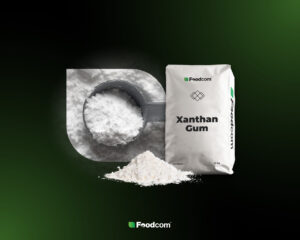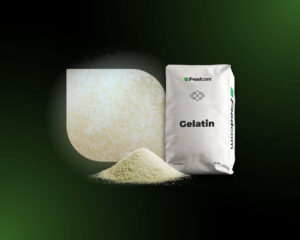- Guma Ksantanowa to polisacharyd składający się z glukozy, mannozy oraz kwasu glukuronowego.
- Jest stosowana jako zagęszczacz, emulgator i stabilizator.
- Gumę Ksantanową stosuje się w przemyśle spożywczym, kosmetycznym, farmaceutycznym i naftowym.
- Rynek Gumy Ksantanowej rozwija się dzięki wzroście popularności wyrobów wegetariańskich, wegańskich i bezglutenowych, gdzie pełni rolę teksturyzatora.
Co to jest Guma Ksantanowa?
Guma Ksantanowa jest polisacharydem, składającym się z glukozy, mannozy oraz kwasu glukuronowego. Produkuje się ją z kukurydzy, pszenicy lub cukru trzcinowego, ale może być również uzyskana z laktozy. Proces polega na fermentacji cukrów prostych przy użyciu bakterii Xanthomonas campestris. W ten sposób otrzymuje się ksantan, który jest następnie oczyszczany w celu wyeliminowania obcych cząstek i innych mikroorganizmów. Produkt jest później suszony i mielony.
Guma Ksantanowa jest szeroko stosowana jako dodatek do żywności – E415 – ze względu na szereg właściwości zmieniających teksturę. Chcesz dowiedzieć się więcej o tej wyjątkowej substancji? Czytaj dalej!
Guma Ksantanowa – właściwości
Guma Ksantanowa to sypki biały lub żółtawy proszek bez obcych zapachów, charakteryzujący się wysoką rozpuszczalnością w wodzie. Działa w szerokim zakresie pH. Ma zdolność do wchłaniania wilgoci z powietrza, czyli jest higroskopijna. Dobrze rozpuszcza się zarówno w ciepłej i zimnej wodzie, jak również w innych płynach. W środowisku wodnym pęcznieje.
Jest składnikiem powszechnie używanym w przemyśle ze względu na szereg właściwości modyfikujących teksturę. Stosowana jest jako zagęszczacz, teksturyzator i stabilizator. Jest też emulgatorem, zwiększa stabilność emulsji.
Guma Ksantanowa – zastosowanie
Guma Ksantanowa jest głównie wykorzystywana w przemyśle spożywczym. Jako E415 jest zagęszczaczem, stabilizatorem i emulgatorem. Może być stosowana jako zamiennik Żelatyny, w produktach dla wegetarian i wegan. Jest również wykorzystywana w piekarnictwie i cukiernictwie. Co więcej, Guma Ksantanowa to substancja zagęszczająca, która może zastąpić tłuszcz, dlatego stosuje się ją w żywności o niskiej zawartości kalorii.
Innym ważnym zastosowaniem Gumy Ksantanowej jest przemysł naftowy i gazowy. Jest ona powszechnie stosowana w dużych ilościach jako płyn wiertniczy w celu maksymalizacji wydobycia ropy.
W przemyśle kosmetycznym Guma Ksantanowa jest stosowana jako stabilizator i emulgator w pastach do zębów, żelach, kremach i lotionach. Poprawia lepkość i pomaga utrzymać stałą konsystencję produktów.
W branży farmaceutycznej Guma Ksantanowa jest używana jako środek zagęszczający oraz składnik preparatów ochronnych. Stosowana jest również w celu opóźnienia uwalniania substancji aktywnej z tabletki. Poza tym, z wykorzystaniem Gumy Ksantanowej tworzy się sztuczną ślinę, co stosuje się w leczeniu osób z zespołem Sjogrena, czyli z niedostatecznym wydzielaniem śliny.
Ponadto Guma Ksantanowa wykorzystywana jako składnik farb, barwników tekstylnych, środków grzybobójczych, nawozów i klejów.
Guma Ksantanowa spożywcza
W przemyśle spożywczym Guma Ksantanowa jest składnikiem wielu produktów. Po pierwsze, ma szerokie zastosowanie, gdyż posiada właściwości, które można wykorzystać i w środowisku kwaśnym, i zasadowym. Co więcej, jedzenie, które ją zawiera, posiada odpowiednią konsystencję, jest odporniejsze na działanie enzymów, które zmieniają właściwości produktów, jak również na różnice temperatur, takie jak podgrzewanie, zamrażanie i ponowne rozmrażanie.
Guma Ksantanowa stabilizuje emulsje, zawiesiny i dyspersje wodne oraz zapobiega gęstnieniu produktów przy chłodzeniu, umożliwiając tym samym płynny przepływ w produktach takich jak sosy sałatkowe, przyprawy i syropy. Umożliwia również zawieszenie cząstek przypraw i wzmacniaczy smaku w dressingach bez oleju, sprzedawanych jako towary 'light’ lub 'o obniżonej kaloryczności’.
Jej stabilność w środowisku o niskim pH sprawia, że jest idealnym składnikiem różnych sosów i dipów. W przemyśle piekarniczym i cukierniczym, Guma Ksantanowa poprawia puszystość wypieków, zapewnia zatrzymanie wilgoci i zwiększenie objętości ciasta. Poza tym opóźnia proces czerstwienia chleba, poprzez hamowanie retrogradacji skrobi. Wiele mrożonek zawiera Gumę Ksantanową, ponieważ zapewnia ona doskonałą stabilność w bardzo niskich temperaturach.
Guma Ksantanowa jest również stosowana w produktach bezglutenowych w celu poprawy tekstury i zawiesiny. W produktach wegańskich Guma Ksantanowa zapewnia lepkość, która normalnie zostałaby osiągnięta przez użycie jaj.
Guma Ksantanowa w kosmetykach
W przemyśle kosmetycznym Guma Ksantanowa jest popularnym teksturyzatorem. Może być stosowana w stężeniu od 0,01% do 10%. Jest często wykorzystywana dzięki swojej stabilności w środowiskach kwaśnych oraz przy niskich temperaturach, po zamrażaniu i rozmrażaniu. Guma Ksantanowa umożliwia połączenie różnych składników kosmetycznych poprzez zmianę napięcia międzyfazowego, co sprzyja tworzeniu mieszanin pomiędzy niemieszającymi się cieczami. Dodatkowo, wspomaga proces emulgowania oraz zwiększa stabilność i trwałość emulsji, a także nadaje płynnym preparatom konsystencję żelu.
Stosuje się ją w celu zagęszczenia i jest emulgatorem w kosmetykach, szczególnie w produkcji żeli kosmetycznych. Gumę Ksantanową można znaleźć w: produktach myjących, w emulsjach, balsamach, produktach do pielęgnacji włosów i kosmetykach do demakijażu.
Guma Ksantanowa perspektywy rynkowe
Guma Ksantanowa zyskuje na popularności, na co mają wpływ następujące trendy rynkowe. W ostatnich latach zauważyć można było wzrost popularności diet wegetariańskiej i wegańskiej, a z racji tego, że Guma Ksantanowa jest roślinnym odpowiednikiem żelatyny i może służyć jako zamiennik jajek, ma to duży wpływ na rozwój jej rynku. Dodatkowo, w związku z rosnącą świadomością zdrowotną konsumentów, nastąpiło zwiększenie popytu na produkty bezglutenowe, a Guma Ksantanowa często znajduje się w składzie tych wyrobów, pełniąc rolę teksturyzatora.
Analizując rynek Gumy Ksantanowej, należy mieć na uwadze, że popyt na nią jest sezonowy. Obserwujemy wzmożone zapotrzebowanie na nią na przykład po zbiorach owoców, co jest spowodowane bardziej intensywną produkcją dżemów, do których wykorzystuje się ten surowiec.
Dlaczego Foodcom?
Nasz zespół Wsparcia Sprzedaży pomaga naszym Partnerom Handlowym w sprawnym i efektywnym przeprowadzeniu transakcji handlowych, aby zapewnić najwyższą jakość usług dla wszystkich naszych Partnerów Handlowych. Nasz zespół logistyczny zadba o transport, a dział finansowy będzie odpowiedzialny za wszystkie sprawy związane z finansową częścią transakcji.








